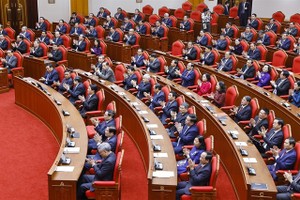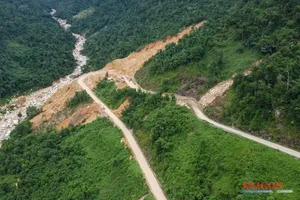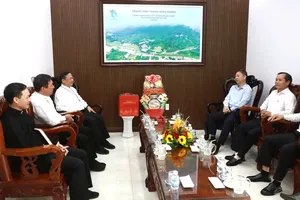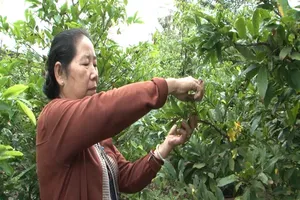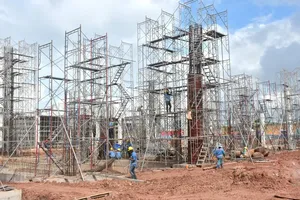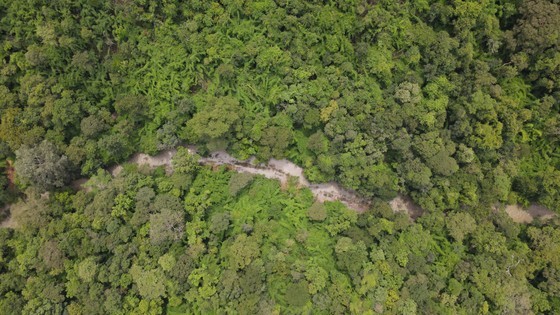 |
Overview of the forest where the construction of Ka Pet reservoir is planned |
Of the two precious wood species, there are 26 burma padauk trees.
Previously, the South-Central province of Binh Thuan had a plan to build the Ka Pet irrigation reservoir on more than 600 hectares of forest land. Regarding the replacement forest, the Southern Forest Investigation and Planning Sub-Institute performed a survey and informed the results together with assessment of the current status of forests and forestry land in the project area.
Doctor Do Van Thong, Head of the Southern Forest Investigation and Planning Sub-Institute, said that they performed a survey on a total forest land area of 96,000 square meters, accounting for 1.67 percent of the total area of the project.
According to the survey, the area is home to 4,262 rare and valuable woody trees comprising 78 species under 62 genera and 35 plant families.
The Ka Pet reservoir is projected to be built on a mixed forest area with a maximum density of 400 trees per hectare and an average woody reserve of 145 cubic meters per hectare on the surveyed area.
The results of the survey have been affirmed to meet requirements by the specialized inspection delegation of Binh Thuan Province. The Department of Agriculture and Rural Development of Binh Thuan Province has also agreed with the results, added Doctor Do Van Thong.
The Ka Pet reservoir project, which is an important national project, has a capacity of 51 million cubic meters and a total investment capital of more than VND874 billion (US$36 million).
To build the project, it is expected to destroy more than 619 hectares of forested land, including more than 137 hectares of special-use forest.
After its completion, the project is likely to supply water for agricultural purposes and domestic water for daily activities of 120,000 households in Ham Thuan Nam District and Phan Thiet City as well as provide water for reservoirs in downstream areas to indirectly irrigate more than 6,200 hectares of agricultural areas, prevent floods and improve the ecological environment for some downstream areas of Binh Thuan Province.


